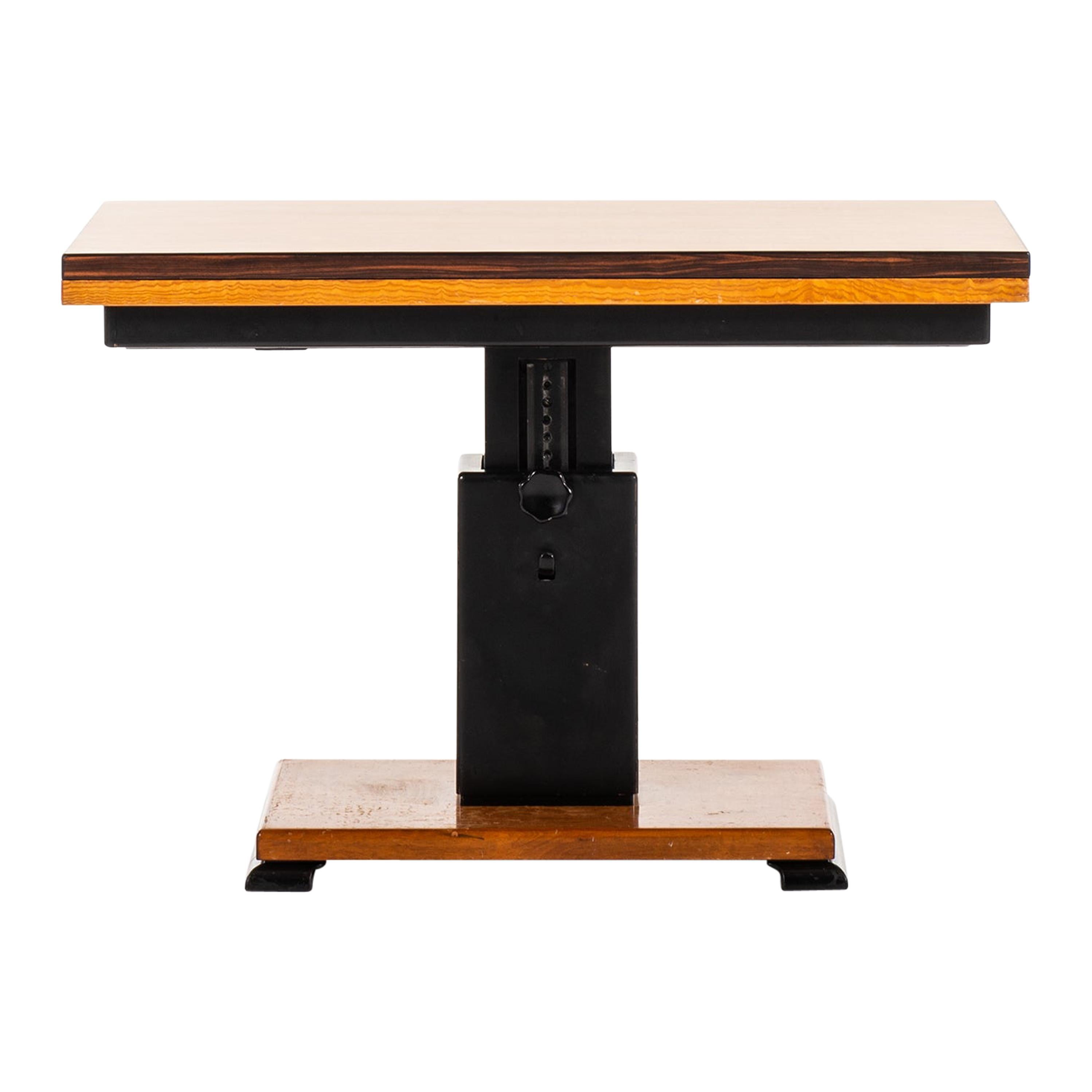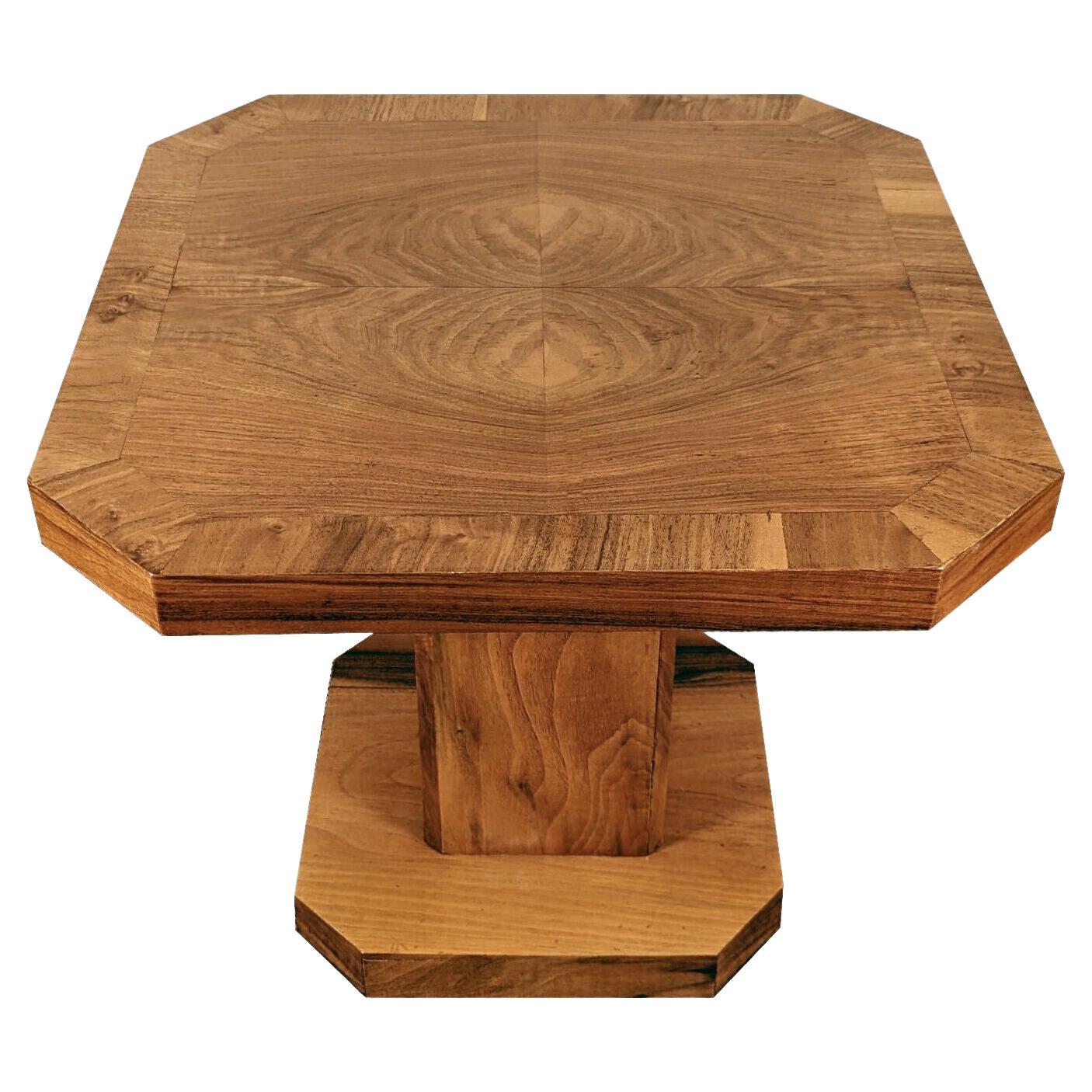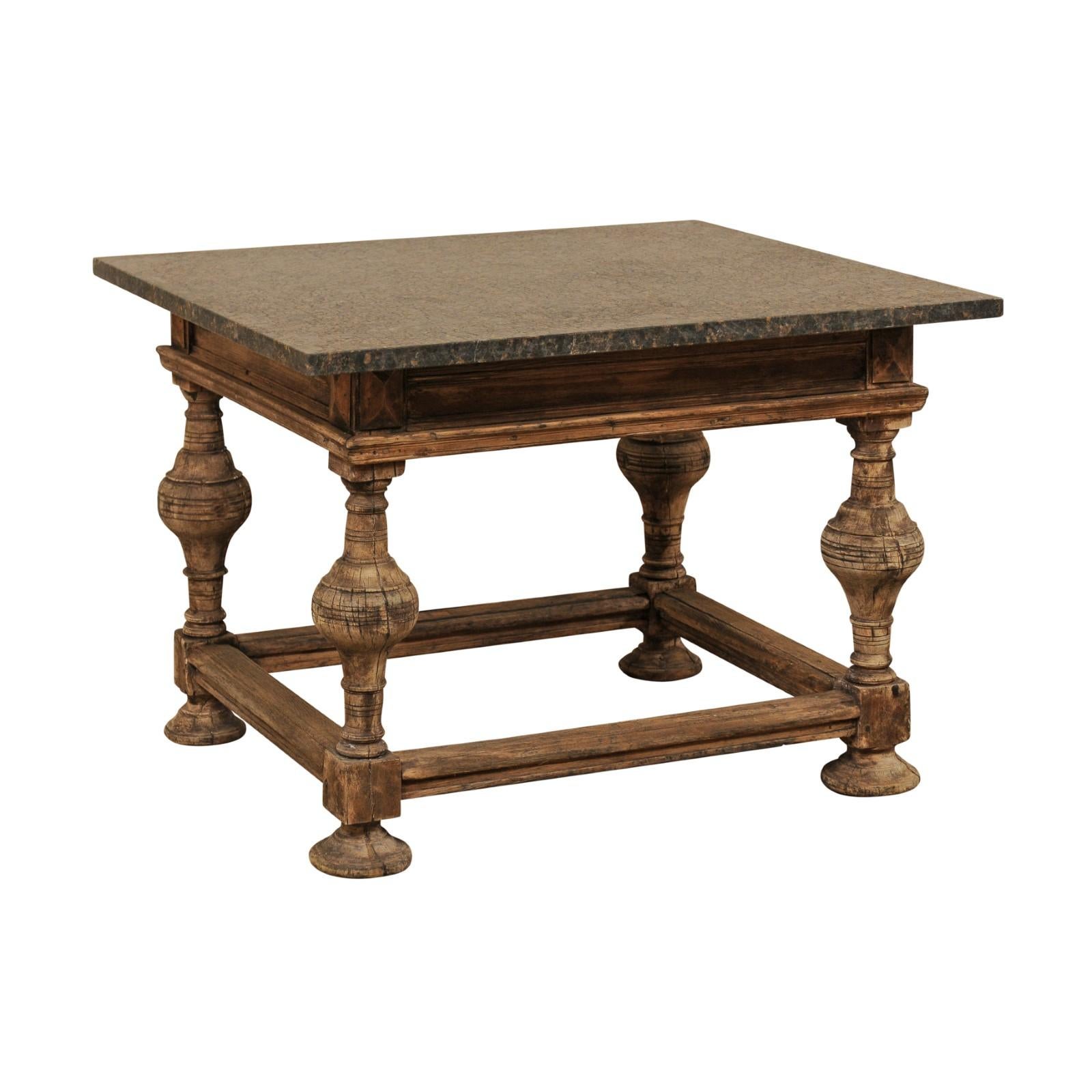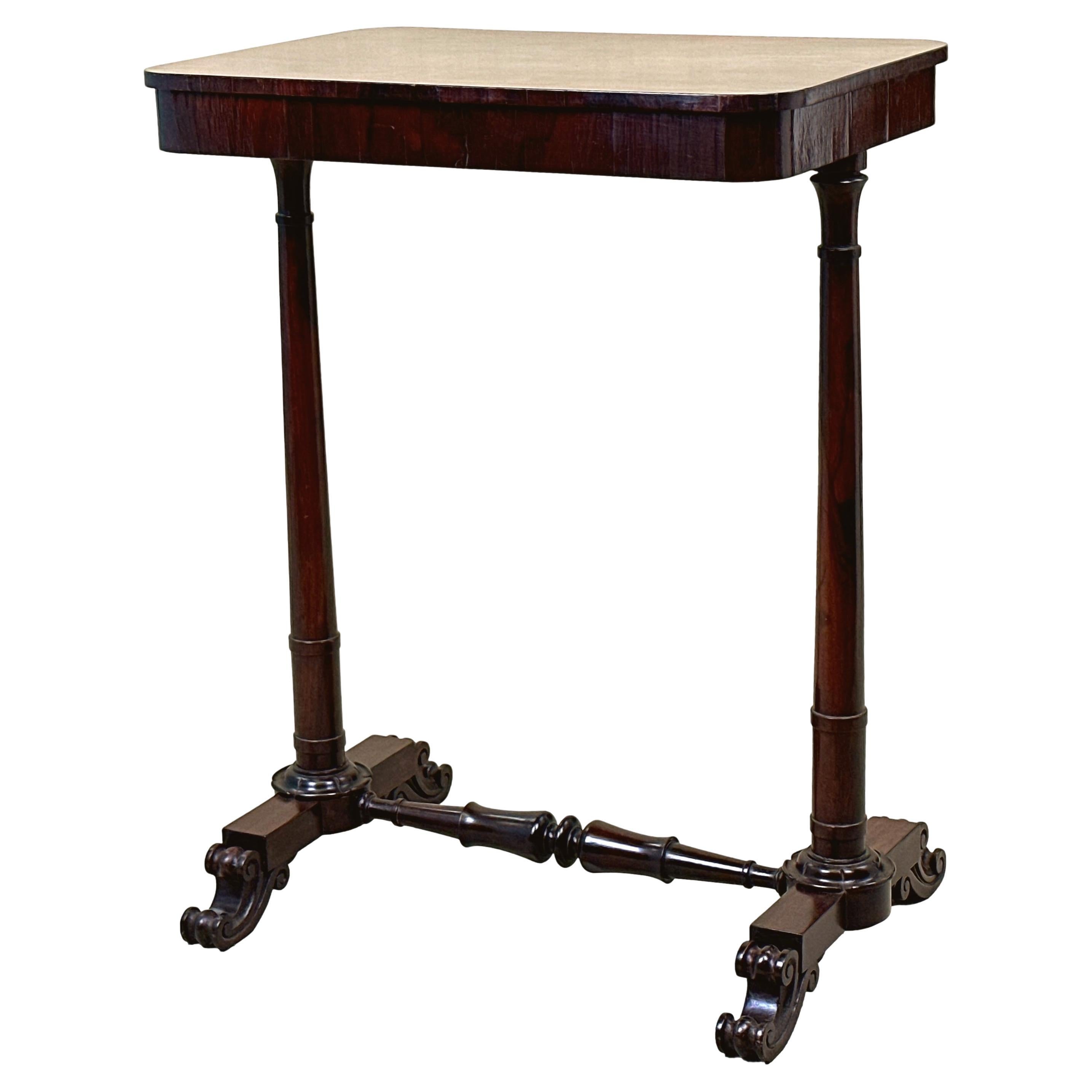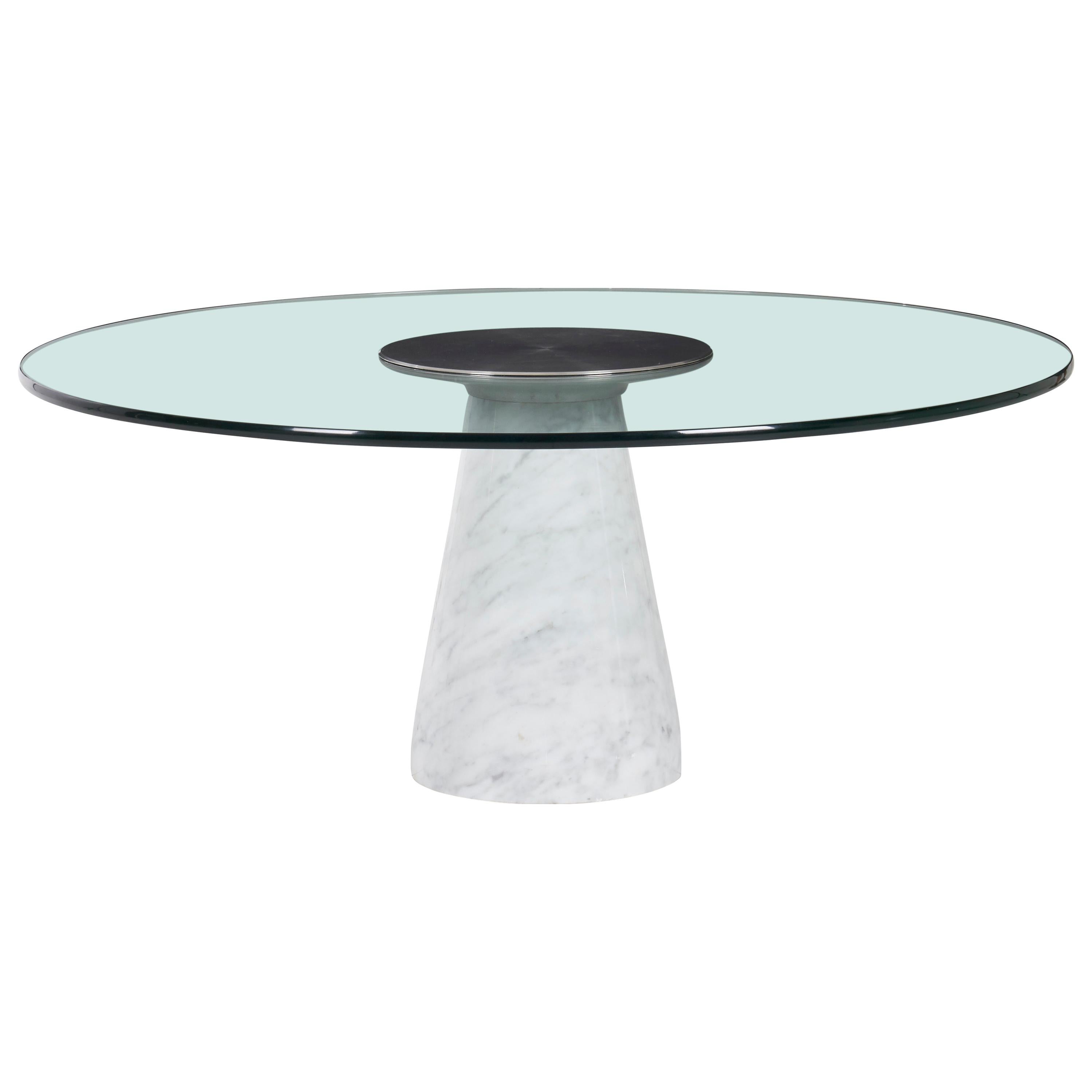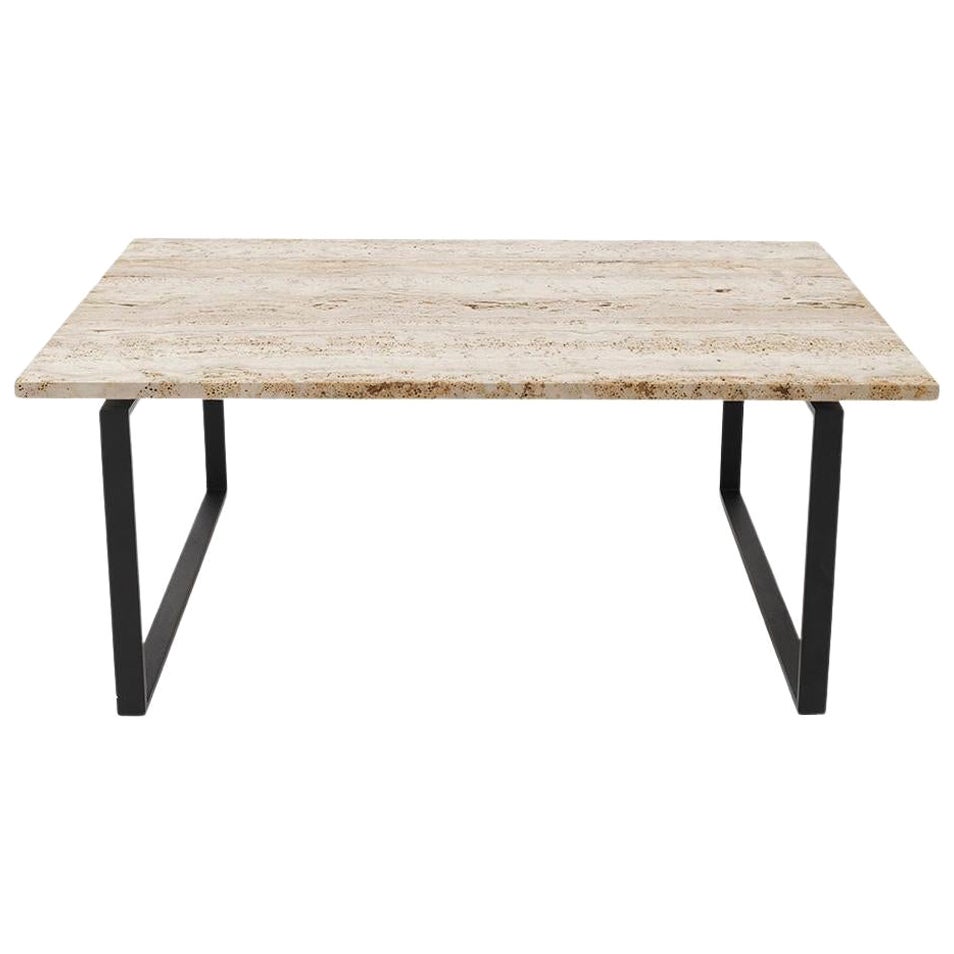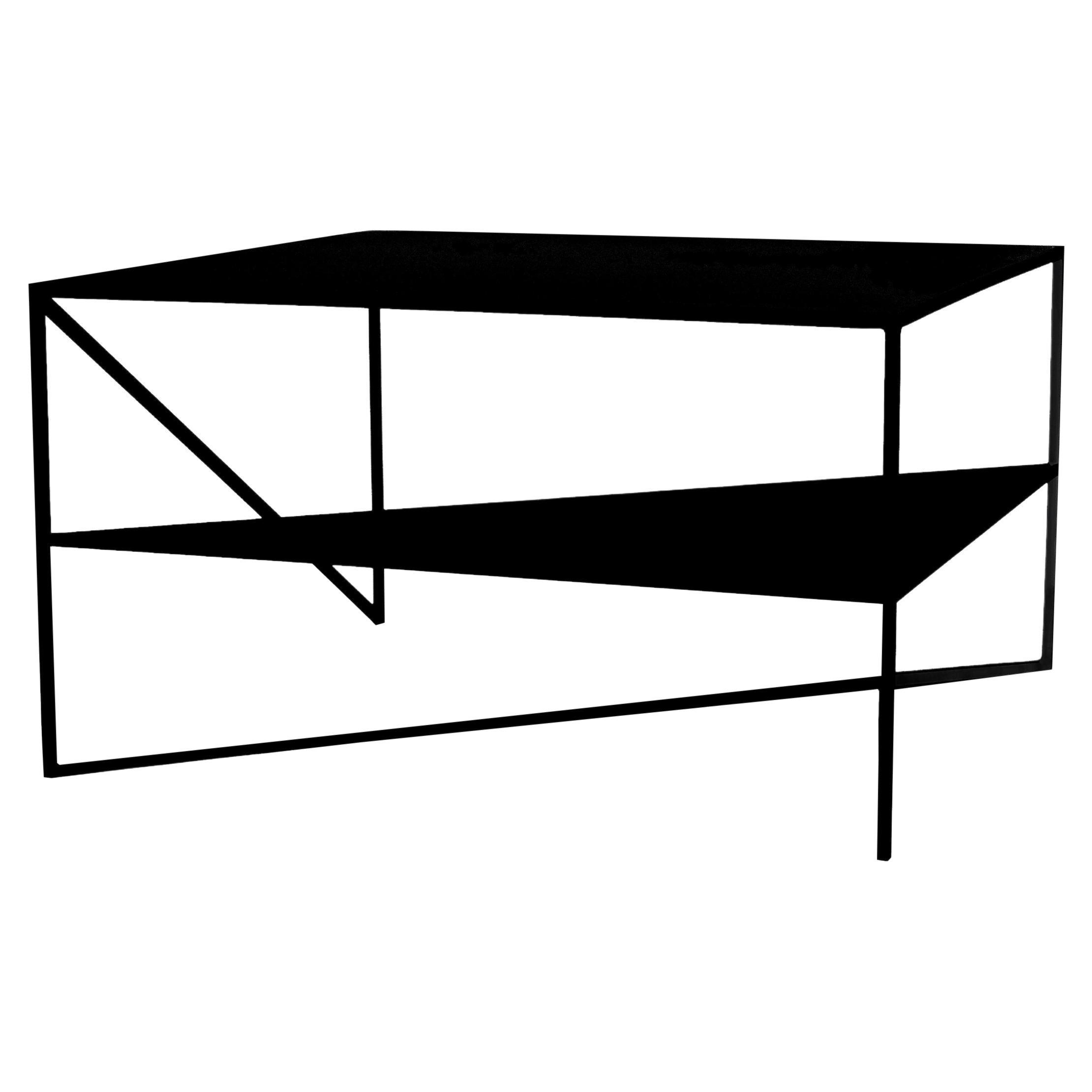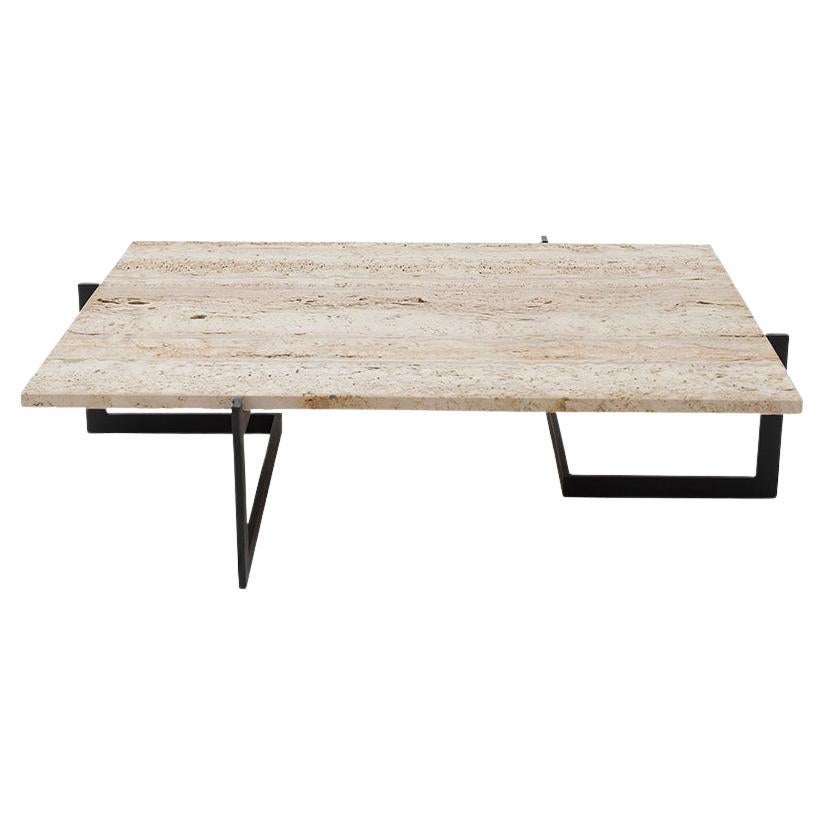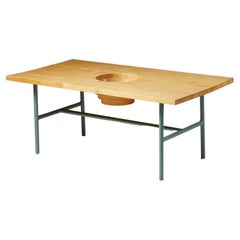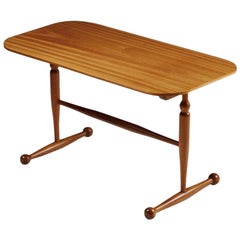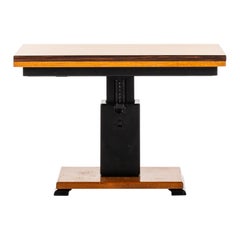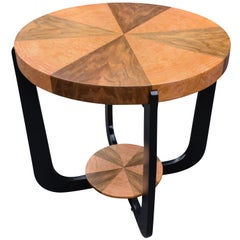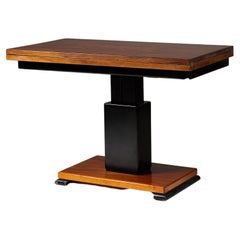
Occasional Table “the Ideal Table” Designed by Otto Wretling, Sweden, 1930s
View Similar Items
Want more images or videos?
Request additional images or videos from the seller
1 of 18
Occasional Table “the Ideal Table” Designed by Otto Wretling, Sweden, 1930s
About the Item
- Creator:Otto Wretling (Designer)
- Dimensions:Height: 29.93 in (76 cm)Width: 44.1 in (112 cm)Depth: 26.78 in (68 cm)
- Style:Mid-Century Modern (Of the Period)
- Materials and Techniques:Birch,Rosewood
- Place of Origin:Sweden
- Period:Mid-20th Century
- Date of Manufacture:1930s
- Condition:
- Seller Location:Stockholm, SE
- Reference Number:1stDibs: LU1006628412502
About the Seller
5.0
Recognized Seller
These prestigious sellers are industry leaders and represent the highest echelon for item quality and design.
Gold Seller
These expertly vetted sellers are highly rated and consistently exceed customer expectations.
Established in 1998
1stDibs seller since 2013
184 sales on 1stDibs
Typical response time: 1 hour
More From This SellerView All
- Occasional Table Designed by Thomas Sandell, for Asplund, Sweden, 1990sBy Thomas SandellLocated in Stockholm, SEOccasional table designed by Thomas Sandell for Asplund, Sweden, 1990s. Birch and lacquered tubular steel. Dimensions: H: 49 cm / 1' 7 1/4" L: 120 cm / 3' 11 1/4" D: 63.5 cm / 2' ...Category
Late 20th Century Swedish Mid-Century Modern Center Tables
MaterialsSteel
- Occasional Table, Anonymous for Oy Stockmann AB, Finland, 1950sLocated in Stockholm, SEOccasional table, anonymous for Oy Stockmann AB, Finland. 1950s. Elm. The most compelling aspect of this occasional table is the relationship of its legs to the surface. With splay...Category
Mid-20th Century Finnish Mid-Century Modern Tables
MaterialsElm
- Occasional Table Designed by Josef Frank for Svenskt Tenn, Sweden, 1950sBy Josef FrankLocated in Stockholm, SEOccasional table designed by Josef Frank for Svenskt Tenn, Sweden. 1950s. Mahogany. H: 45 cm L: 80 cm D: 40 cm Josef Frank was a true European, he was also a pioneer of what would become classic 20th century Swedish design and the “Scandinavian Design Style”. Austrian- born Frank started his design career as an architect after having trained at the Technische Hochschule in Vienna between 1903 and 1910. After his training he went on to teach at Kunstgewerbeschule (The Viennese School of Arts and crafts) where he developed and espoused the new school of modernist thinking towards Architecture and Design that was coming to fruition in Vienna at the time. He also went on to lead the Vienna Werkbund throughout the 1920s. This was a truly progressive group of Architects and Designers who set about improving the daily lives of Austrian people through modernist design and architecture in partnership with Arts and Crafts ideals and construction. Frank’s leadership of the Werkbund had already cemented his place at the forefront of European design. Frank’s time in Vienna was typified by his design for the “Die Wohnung” exhibition of the Deutscher Werkbund in Stuttgart, 1927 where he exhibited along side his contemporaries at the forefront of design, such as the likes of Le Corbusier and Walter Gropius. Here he showed a specially designed pair of flat-roofed reinforced concrete houses in what is now seen as a typical modernist style. What separated Frank’s house from the other 32 houses of the exhibition was the interior and furniture inside the building. It was described as “Neo-Classical” and filled with an eclectic mix of period pieces, modern design and pieces designed by Frank himself that seemed to cross the two worlds. This was a complete opposite direction to that which his fellow Architects were travelling in with their pared back and angular aesthetics. Frank said of his own work: “The house is not a work of art, simply a place where one lives,” and by this reasoning Frank rejected the regimental mechanisation of the living space that his contemporaries believed in, instead he set about creating congenial and spontaneous interiors. Frank’s practice saw him placing the bright colours and the soft forms of nature back into the furnishings and interiors that he thought modernism sorely mist. Frank, along with Oskar Walch set up Haus und Garten in Vienna in 1925. This was Frank’s first commercial foray into furniture and home furnishings and the company went on to become the most influential furnishing house in Vienna with a riotous depth of colour and interesting shapes becoming the trademark of their design. However this success was to come to an end with rise of Nazism in Vienna in the early 1930’s. Frank was Jewish, and he and his wife Anna decided they would leave Vienna for her motherland: Sweden, in 1933. Frank continued to design for Haus and Garten, visiting Vienna occasionally and designing the pieces that would continue to be the company’s best...Category
Vintage 1950s Swedish Scandinavian Modern Tables
MaterialsMahogany
- Occasional Table Annika Designed by Bruno Mathsson for Karl Mathsson, SwedenBy Bruno MathssonLocated in Stockholm, SEOccasional table Annika designed by Bruno Mathsson for Karl Mathsson, Sweden. 1973. Birch and Karelian birch. Dimensions: H: 42 cm / 1' 4" D: 65 cm / 2' 1''Category
Vintage 1970s Swedish Scandinavian Modern Tables
MaterialsBirch
- Occasional Table ‘The Egyptian Table’ Designed by Mogens Lassen for A.J. IversenBy Mogens LassenLocated in Stockholm, SEOccasional table ‘The Egyptian Table’ designed by Mogens Lassen for A.J. Iversen, Denmark, 1960s. Mahogany, foldable frame and top with raised e...Category
Mid-20th Century Danish Mid-Century Modern Coffee and Cocktail Tables
MaterialsBrass
- Dining Table Designed by Kaare Klint for Rud, Rasmussen, Denmark, 1930sBy Kaare KlintLocated in Stockholm, SEDining table designed by Kaare Klint for Rud. Rasmussen, Denmark. 1930s. Mahogany. Stamped. This model is one of the rarest and finest dining tables by the Danish master Kaare Klin...Category
Early 20th Century Danish Mid-Century Modern Dining Room Tables
MaterialsMahogany
You May Also Like
- Otto & Bo Wretling Table Model Ideal Produced by Otto Wretling in SwedenBy Otto WretlingLocated in Limhamn, Skåne länRare Ideal table designed by Otto Wretling and his son Bo Wretling. Produced by Otto Wretling in Sweden. Height adjustable (7 steps). Dimensions W 112 cm / 224 cm D 68 cm H 60...Category
Vintage 1930s Swedish Scandinavian Modern Dining Room Tables
MaterialsSteel
- Art Deco Two-Tier Occasional Table in Walnut & Maple, circa 1930Located in Devon, EnglandVery stylish Art Deco walnut and maple table with ebonised legs dating to the 1930s. This table is beautifully shaped and fully restored to showroom condition. Typically larger than ...Category
Mid-20th Century English Art Deco Tables
MaterialsBirdseye Maple, Walnut, Ebony
- Art Deco Figured Walnut Coffee Table, circa 1930s, EnglishLocated in Devon, EnglandFabulous and totally original 1930s Art Deco walnut occasional table originating from England, UK. This table is ideal for modern day use either as a coffee table or center table. Th...Category
Mid-20th Century English Art Deco Center Tables
MaterialsWalnut
- 18th Century Swedish Baroque Occasional Table with New Honed Granite TopLocated in Atlanta, GAA Swedish Baroque table from the 18th century with newer honed granite top. This Baroque occasional table from Sweden features a honed marble top which rests upon a robust wood frame...Category
Antique 18th Century Swedish Baroque Tables
MaterialsGranite
- Occasional Iron Base TableLocated in Brecht, BEA one of a kind, this iron table, with glass tabletop, great indoors as well as outdoors, quirky, sturdy, unusual.Category
Late 20th Century Spanish Tables
MaterialsIron
- Late Regency Rosewood Occasional TableLocated in Bedfordshire, GBA Good Quality, 19th Century, Late Regency Period Rosewood Occasional Lamp Table Of Diminutive Proportions, Having Well Figured Rectangular Top Raised On Elegant Turned End Supports,...Category
Antique Early 19th Century English Regency Center Tables
MaterialsRosewood
Recently Viewed
View AllMore Ways To Browse
Ideal Table
Outside Tables
Table From 1930s
Vintage Table Names
Grace Table
Grace Tables
Table With Mechanism
Lacquered Occasional Table
Adjustable Height Tables Wood
Mid Century Exotic Wood Tables
Occasional Rosewood
Vintage Wood Plain
Vintage Wood Plainer
Rosewood Occasional Table
1930s Occasional Table
Sweden Rosewood Table
Swedish Rosewood Table
Console Table Extending
